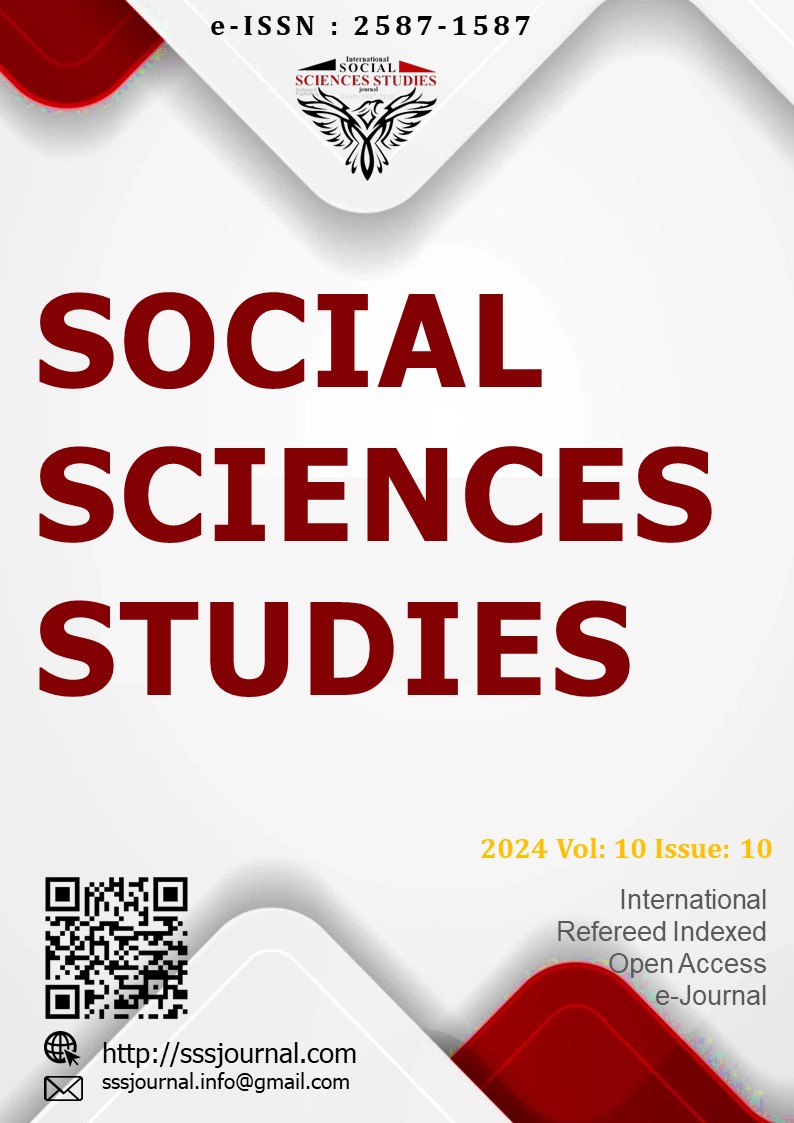Ortaokul Öğrencilerinin Cinsiyet-Sınıf Düzeyi ve Okunan Kitap Sayısına Göre Okuma Stratejileri Üstbilişsel Farkındalık Seviyeleri
Author :
Abstract
Bu çalışmayla ortaokul aşamasındaki öğrencilerin okuma stratejileri üstbilişsel farkındalık seviyelerinin belirlenmesi ve bunun cinsiyet, sınıf, kitap okuma sayısı değişkenleri ile ilişkisinin tespit edilmesi hedeflenmiştir. Araştırma, Diyarbakır il merkezindeki uygun örneklem yoluyla belirlenen iki okulda yürütülmüş, çalışmaya bu okullarda öğrenim gören ve tesadüfi örneklem yöntemiyle belirlenen 312 öğrenci katılmıştır. Öğrencilerden 10 tanesinin verileri güvenilir bulunmadığından veri setinden çıkarılmıştır. Araştırmanın verileri, Mokhtari ve Reichard (2002) tarafından geliştirilen ve Öztürk (2012) tarafından Türkçeye uyarlanan Okuma Stratejileri Üstbilişsel Farkındalık Envanteri ile toplanmıştır. Ölçeğin bu çalışmadaki iç tutarlılık değerleri yeniden hesaplanmış, Cronbach Alfa değeri ölçeğin tümü için .91 olarak tespit edilmiştir. Ölçeğin alt boyutlarının güvenilirlikleri incelendiğinde “Genel Okuma Stratejisi” .89; Problem Çözme Stratejisi .80 ve Okuma Stratejilerini Destekleme’nin .87 güvenirlik değerine sahip olduğu tespit edilmiştir. Elde edilen verilerin analizinde SPSS 21.0 Paket programı kullanılarak frekans ve yüzde dağılımları tablolar halinde verilmiştir. Ortaokul öğrencilerinin okuma stratejileri üstbilişsel okuma farkındalık düzeylerinin genel ortalaması 39.03 olarak tespit edilmiştir. Elde edilen veriler alt boyutlarda incelendiğinde okuma stratejilerini destekleme boyutunda 49,6; problem çözme stratejisinde 29,4; genel okuma stratejisinde ise 38,1 olduğu sonucuna ulaşılmıştır. Öğrencilerin cinsiyet ve sınıf değişkenleri ile okuma stratejileri üstbilişsel okuma farkındalık düzeylerinde elde edilen bulgulara göre istatistiksel bir farklılık bulunmamıştır. Bulguların aritmetik ortalaması incelendiğinde ise kız öğrencilerin erkek öğrencilerden üst sınıfların, sekizinci sınıflar hariç alt sınıflardan okuma stratejileri üstbilişsel farkındalık seviyelerinin daha iyi olduğu görülmektedir. Bunun yanı sıra öğrencilerin okuma stratejileri üstbilişsel farkındalıkları ile bir yılda okudukları kitap sayısı arasında daha fazla kitap okuyanların lehine oransal olarak anlamlı bir farklılık gösterdiği tespit edilmiştir.
Keywords
Abstract
The aim of this study was to determine the reading strategies metacognitive awareness levels of middle school students and to determine its relationship with gender, grade, and number of books read. The study was conducted in two schools in Diyarbakır province center, and 312 students studying in these schools and determined by random sampling method participated in the study. The data of 10 of the students were excluded from the data set because their data were found to be unreliable. The data were collected with the Reading Strategies Metacognitive Awareness Inventory developed by Mokhtari and Reichard (2002) and adapted into Turkish by Öztürk (2012). The internal consistency values of the scale in this study were recalculated and Cronbach's alpha value was found to be .91 for the whole scale. When the reliabilities of the sub-dimensions of the scale were examined, it was found that "General Reading Strategy" had a reliability value of .89, "Problem Solving Strategy" had a reliability value of .80 and "Supporting Reading Strategies" had a reliability value of .87. In the analysis of the data, frequency and percentage distributions were prepared with SPSS 21.0 package program. As a result, the general average of middle school students' reading strategies metacognitive reading awareness levels was found to be 39.03. When the obtained data were analyzed in sub-dimensions, it was concluded that it was 49.6 in the dimension of supporting reading strategies, 29.4 in problem solving strategy and 38.1 in general reading strategy. According to the findings obtained from the students' gender and grade variables and the metacognitive reading awareness levels of reading strategies, no statistical difference was found. When the arithmetic mean of the findings is examined, it is seen that the reading strategy metacognitive awareness levels of female students are better than male students in upper grades and lower grades except for the eighth grades. In addition, it was determined that there was a proportionally significant difference between the students' metacognitive awareness of reading strategies and the number of books they read in a year in favor of those who read more books.





